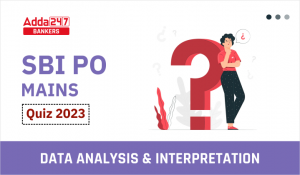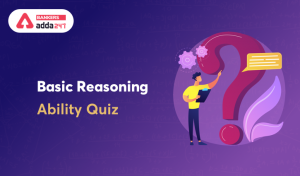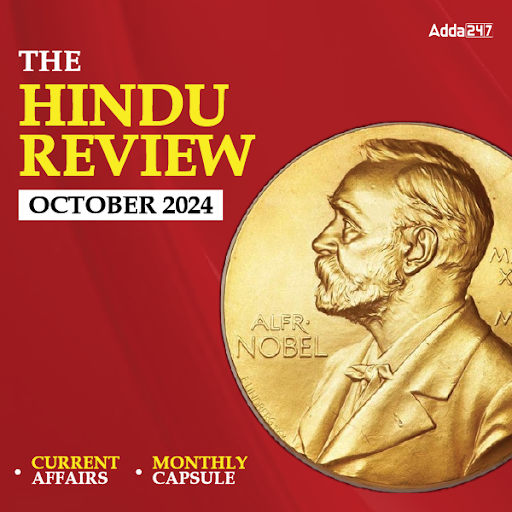Dear Aspirants,
Banking Awareness for Dena Bank PO Exam 2018
With the increased competition in the field of banking examinations, it has now become very important to cover up all the sections efficiently. One subject that can help you bagging graceful marks in the minimum time in these examinations is Banking Awareness. Banking Awareness Quiz not only helps you deal with the General Awareness Section of Banking Exams but also, the Personal Interview round of Banking Recruitment.
Q1. Small and marginal farmers get special treatment from banks. Who ae these marginal farmers?
(a) Those who have land for cultivation up to 1 acre
(b) They are paid daily wages of Rs. 100/- for working on the land
(c) They have land holdings upto 2 acres
(d) All of the above
(e) None of the given options is true
S1. Ans.(c)
Sol. Farmers with landholding of up to 1 hectare are considered as Marginal Farmers. Farmers with a landholding of more than 1 hectare but less than 2 hectares are considered as Small Farmers. For the purpose of priority sector loans ‘small and marginal farmers’ include landless agricultural labourers, tenant farmers, oral lessees and share-croppers, whose share of landholding is within above limits prescribed for “Small and Marginal Farmer”.
Sol. Farmers with landholding of up to 1 hectare are considered as Marginal Farmers. Farmers with a landholding of more than 1 hectare but less than 2 hectares are considered as Small Farmers. For the purpose of priority sector loans ‘small and marginal farmers’ include landless agricultural labourers, tenant farmers, oral lessees and share-croppers, whose share of landholding is within above limits prescribed for “Small and Marginal Farmer”.
Q2. MFIs currently operate in 29 States, 4 Union Territories and 588 districts in India. MFIs stands for-
(a) Microfinance Institutions
(b) Microfinance Indian
(c) Medium Institutions
(d) Market Institutions
(e) Microfinance International
S2. Ans.(a)
Sol. MFIs stands for Microfinance Institutions.
Sol. MFIs stands for Microfinance Institutions.
Q3. Which of the following is the most essential service for the poor in the country to be reckoned as part of financial inclusion efforts?
(a) Pension payments
(b) Life insurance
(c) No frills accounts
(d) Consumption loans
(e) None of the given options is true
S3. Ans.(c)
Sol. No frills accounts is the most essential service for the poor in the country to be reckoned as part of financial inclusion efforts.
Sol. No frills accounts is the most essential service for the poor in the country to be reckoned as part of financial inclusion efforts.
Q4. The concept of self groups is one of the crucial working models for promoting micro finance. What is the basis of this model?
(a) It is linked to the concept of group guarantee
(b) Each member waits for his chance to get the bank loan as per seniority in the group
(c) Such groups prepare their own plan for savings and credit
(d) They work on the principle of sharing their profit among members
(e) None of the given options is true
S4. Ans.(a)
Sol. Self groups is linked to the concept of group guarantee.
Sol. Self groups is linked to the concept of group guarantee.
Q5. Many banks are presently recruiting large numbers of business correspondents in terms of RBI instructions for financial inclusion. Which of the following is not eligible to be appointed as business correspondent?
(a) Bank staff member
(b) Kirana stores
(c) Retired teachers
(d) Ex-servicemen
(e) None of the given options is true
S5. Ans.(a)
Sol. Bank staff member is not eligible to be appointed as business correspondent.
Sol. Bank staff member is not eligible to be appointed as business correspondent.
Q6. The concept of ultra small bank branch for promoting financial inclusion in the country has been introduced. How would it be described?
(a) Branch with two staff members
(b) These Branches may be set up between the base branch and BC locations so as to provide support to about 8-10 BC Units at a reasonable distance of 3-4 kilometres
(c) An ATM with cash payment and cash deposit
(d) Branch controlled by gram panchayat
(e) None of the given options is true
S6. Ans.(b)
Sol. These Ultra Small Branches may be set up between the base branch and BC locations so as to provide support to about 8-10 BC Units at a reasonable distance of 3-4 kilometres. These could be either newly set up or by conversion of the BC outlets. Such Ultra Small Branches should have minimum infrastructure such as a Core Banking Solution (CBS) terminal linked to a pass book printer and a safe for cash retention for operating large customer transaction and would have to be managed full time by bank officers/ employees.
Sol. These Ultra Small Branches may be set up between the base branch and BC locations so as to provide support to about 8-10 BC Units at a reasonable distance of 3-4 kilometres. These could be either newly set up or by conversion of the BC outlets. Such Ultra Small Branches should have minimum infrastructure such as a Core Banking Solution (CBS) terminal linked to a pass book printer and a safe for cash retention for operating large customer transaction and would have to be managed full time by bank officers/ employees.
Q7. Financial inclusion is a major initiative of RBI. Which of the following is promoting this initiative?
(a) Waiver of agricultural loans
(b) Observing KYC norms strictly
(c) Appointment of business correspondents
(d) Opening of more and more ATMs
(e) None of the given options is true
S7. Ans.(c)
Sol. Appointment of business correspondents is a major initiative of RBI for Financial Inclusion.
Sol. Appointment of business correspondents is a major initiative of RBI for Financial Inclusion.
Q8. Financial literacy programme of RBI is meant to promote which of the following?
(a) For better understanding of banking produts and services
(b) It is meant to stop money laundering
(c) For enabling compliance with KYC norms
(d) All of the above
(e) None of the given options is true
S8. Ans.(a)
Sol. For better understanding of banking produts and services is a major part of Financial literacy programme.
Sol. For better understanding of banking produts and services is a major part of Financial literacy programme.
Q9. Financial inclusion is a programme of the government to cover the maximum population with bank accounts. What is the current coverage approx (As on May 2018)?
(a) 25%
(b) 15%
(c) 40%
(d) 65%
(e) 80%
S9. Ans.(e)
Sol. Up to 80% of Indians now have a bank account.
Sol. Up to 80% of Indians now have a bank account.
Q10. Kisan credit cards or KCC are an effective way of reaching out to the farmers by the banks. What assistance does the farmer receive in this way?
(a) Credit facility for crops etc. against an approved limit
(b) Short term credit facility against value of his crops
(c) Long term credit is provided against his land holdings
(d) Loan is permissible against crops sold but payment yet to be received by the farmer
(e) None of the given options is true
S10. Ans.(a)
Sol. Under KCC, Credit facility for crops etc. against an approved limit receive by farmers.
Sol. Under KCC, Credit facility for crops etc. against an approved limit receive by farmers.
Q11. Which of the following could be considered as an initiative towards promotion of financial inclusion?
(a) Opening of no frills accounts
(b) Appointing business correspondents for servicing rural customers
(c) Opening of bank branches in unbanked districts
(d) All of the above
(e) None of the given options is true
S11. Ans.(d)
Sol. All of the above options could be considered as an initiative towards promotion of financial inclusion.
Sol. All of the above options could be considered as an initiative towards promotion of financial inclusion.
Q12. Why are interest rates charged by micro finance institutions higher than lending rates of banks?
(a) MFIs are not allowed to source deposits from public
(b) Banks have the benefit of cheaper funds
(c) MFIs borrow bulk of their funds from banks
(d) MFIs borrow funds from banks at high cost and also their administrative expenses are more
(e) None of the given options is true
S12. Ans.(d)
Sol. MFIs borrow funds from banks at high cost and also their administrative expenses are more.
Q13. Passing of tough laws against the micro finance companies by a particular state in India has upset the micro finance sector. Which state are we talking about?
(a) Karnataka
(b) Andhra Pradesh
(c) Tamil Nadu
(d) Rajasthan
(e) West Bengal
S13. Ans.(b)
Sol. The microfinance industry has seen tremendous growth over the past five years, growing at a 45% CAGR. It has witnessed rapid evolution with regulatory reforms post the Andhra Pradesh crisis in 2010 to regulate product, pricing and protection of customer interest. This included the growth of regulated NBFC MFIs – a special class of RBI regulated entities carrying out microfinance, the formation of the first ever Self-Regulatory Organizations (SROs) of the RBI, Aadhar based lending by NBFC, MFIs and transformation of some of the entities into universal and small finance banks.
Sol. The microfinance industry has seen tremendous growth over the past five years, growing at a 45% CAGR. It has witnessed rapid evolution with regulatory reforms post the Andhra Pradesh crisis in 2010 to regulate product, pricing and protection of customer interest. This included the growth of regulated NBFC MFIs – a special class of RBI regulated entities carrying out microfinance, the formation of the first ever Self-Regulatory Organizations (SROs) of the RBI, Aadhar based lending by NBFC, MFIs and transformation of some of the entities into universal and small finance banks.
Q14. RBI has largely accepted the recommendations of which committee set up by it to look into the issues of the micro finance sector?
(a) Damodaran committee
(b) Nair committee
(c) Malegam committee
(d) Narasimham committee
(e) Rangarajan Committee
S14. Ans.(c)
Sol. Malegam committee.
Sol. Malegam committee.
Q15. The top rank MFI for the year 2016-17 in India is—
(a) SKF Microfinance Ltd.
(b) Asmitha Microfin
(c) Bandhan Society
(d) Madura Micro Finance Ltd.
(e) Ujjivan Financial Services
S15. Ans.(e)
Sol. Ujjivan Financial Services has the largest geographical spread with operations across 24 states compared to 22 states for Bandhan Bank and 19 states for SKS Microfinance in 2016-17.






 Quantitative Aptitude Quiz For SBI PO Ma...
Quantitative Aptitude Quiz For SBI PO Ma...
 Inequalities Basic Reasoning Quiz for Al...
Inequalities Basic Reasoning Quiz for Al...




